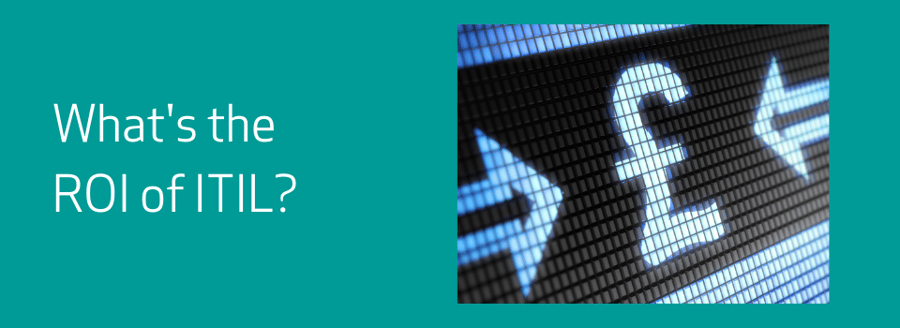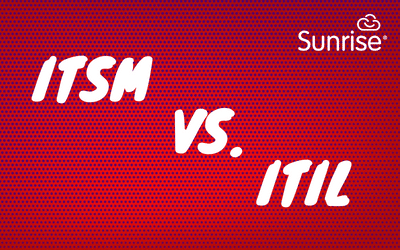A question we’re frequently asked is regarding the Return On Investment, or ROI of ITIL – and whenever it comes around, it’s not one with a short answer. ITIL itself is a framework, a guided set of practices which enable the improvement of IT and related services’ outcomes for employees and end-customers. Its benefits are far ranging and often may not be directly attributable. Nonetheless, those improvements which are the most direct ROI of ITIL investment, can be most tangibly (monetarily) measured in terms of efficiency improvements (doing more, with less resource, effectively reducing costs). Assessing the returns on a structured service management programme under the ITIL framework isn’t straightforward but the elements are there if you look for and have comparatives to measure them by. Indirect benefits are there too and may include reduced room for error, risk and those associated costs – often unknowns until they hit, so in many ways something tantamount to an opportunity cost applies.
Investment in ITIL
And so, we can say that investing in ITIL isn’t a quick or simple path to payback. For a start, undertaking ITIL alignment requires an understanding of its detailed components, which have evolved over the years to the current ITIL v4 and will presumably continue to change, and there is of course a cost associated with all education and training of staff. Ultimately, the benefit is related to their improved learning and value to the organisation and how they apply this accumulation of knowledge – as with any formal training in fact. Investing in ITIL and putting it into practice can take years; as with any continual improvement programme there’s no defined end point, there’s always room for development as circumstances change.
The benefits enabled by adopting ITIL processes are the more measurable outcomes and that means looking to IT Service Management. Refining and improving the delivery of ITSM practices and processes brings the real day to day advantages of investing in ITIL. With modern ITSM tools easily translating the core processes of ITIL into practical service delivery functions, efficiencies become more obvious. Let’s take the basics, for example – implementing Incident management and SLAs are the first steps for any service desk to undertake when aiming to improve the service they give to their co-employees, and these are intrinsically measurable. How these translate to impacts such as reduced downtime of systems and lost productivity is a step further but should be within any organisation’s grasp. Beyond these basics, impacts of ITIL and changed service management practices may be a challenge to measure, but ROI indicators are available with a little cooperation between departments and high level buy-in.
Reporting & Analytics
Reporting of course plays a huge part in the ROI of ITIL and ITSM. If you can’t measure it, how can you assess the worth of any practice? Modern ITSM tools should always provide a flexible set of reports that are easily configurable within the IT management team, and of course it’s always good practice to go as deep as you can to measure impacts and propose ongoing solutions to senior managers, so integrations with specialist analytics engines like PowerBI should be the norm.
And so, back to that question – the ROI of ITIL? It is out there, but really we’d say the proof is in the pudding. Understand the ITIL practices, assess how they can be applied within your organisation and put them in place with a modern ITSM tool. Then you’ll be able to measure the benefits of your ITIL investment, refine and improve the outcomes over time.




.png)
